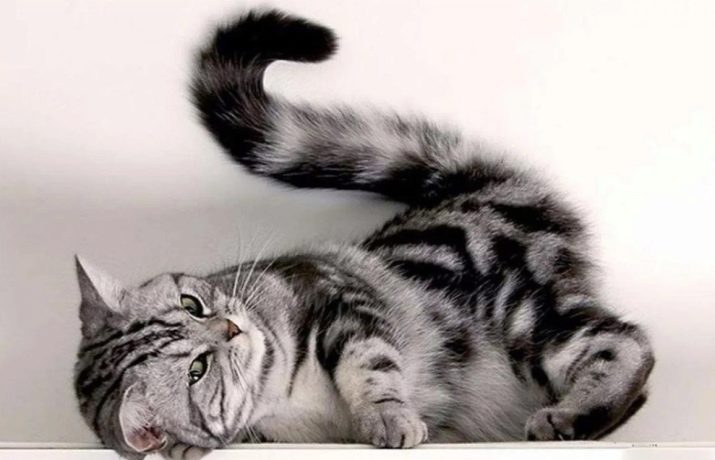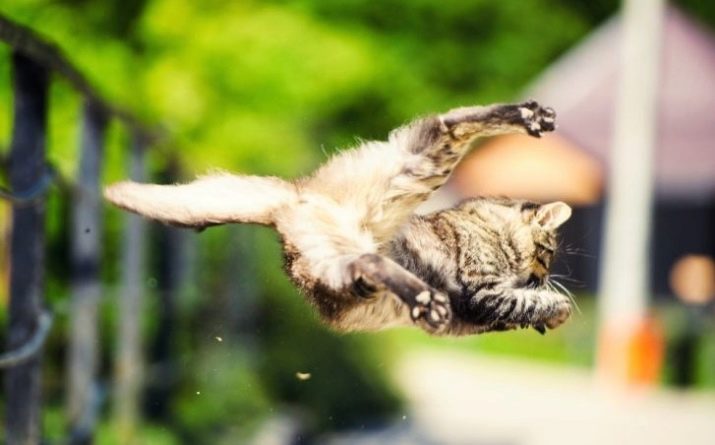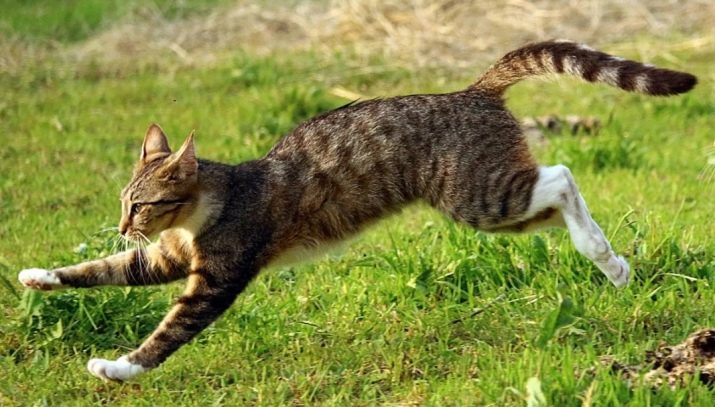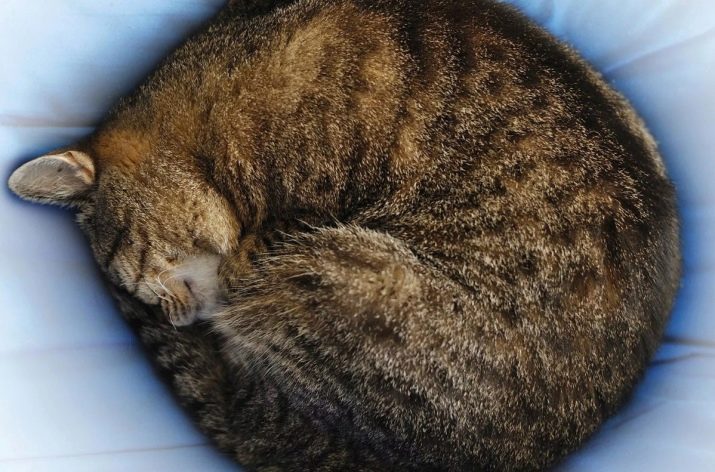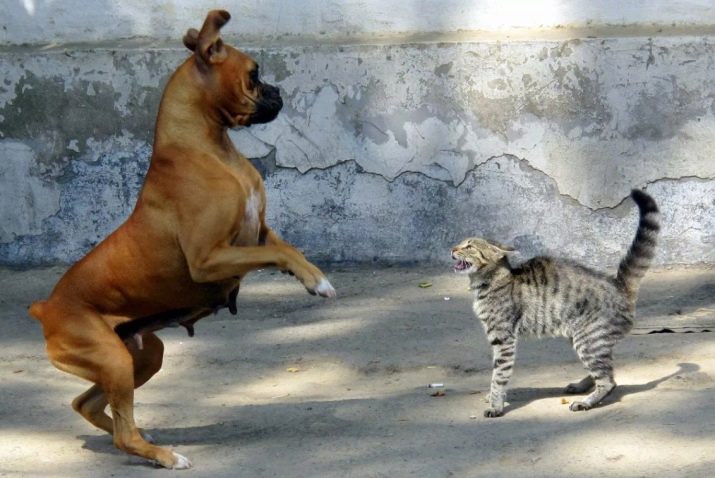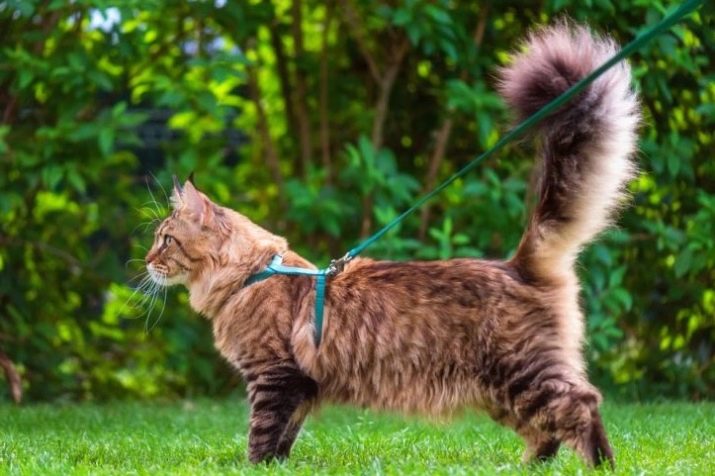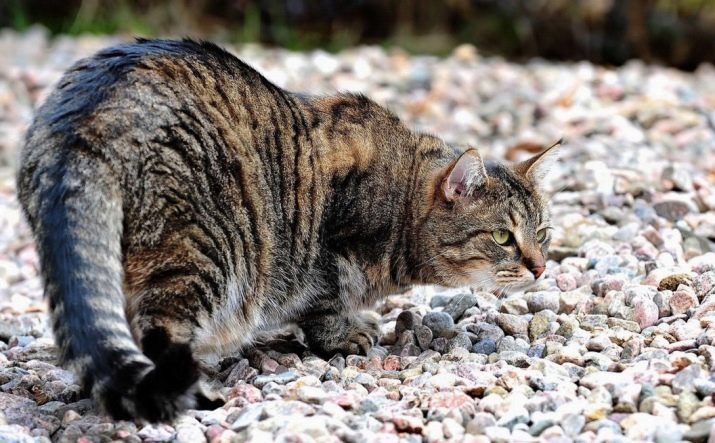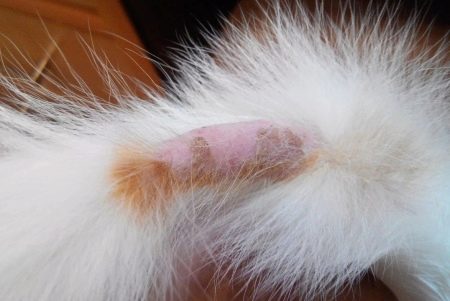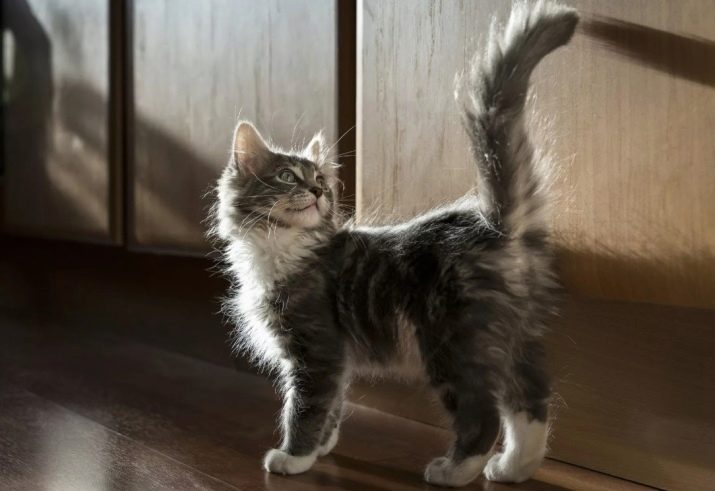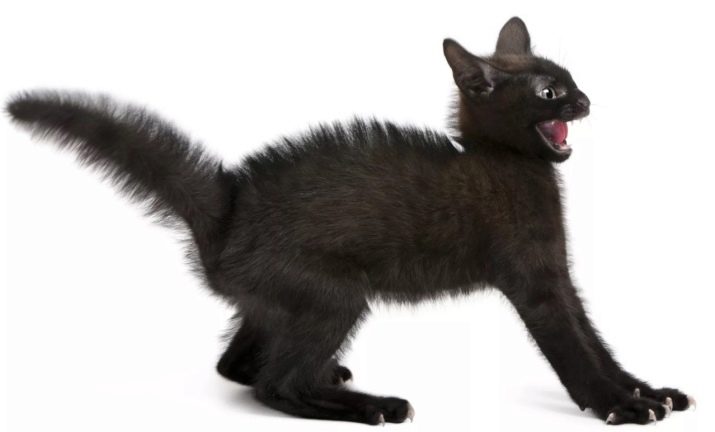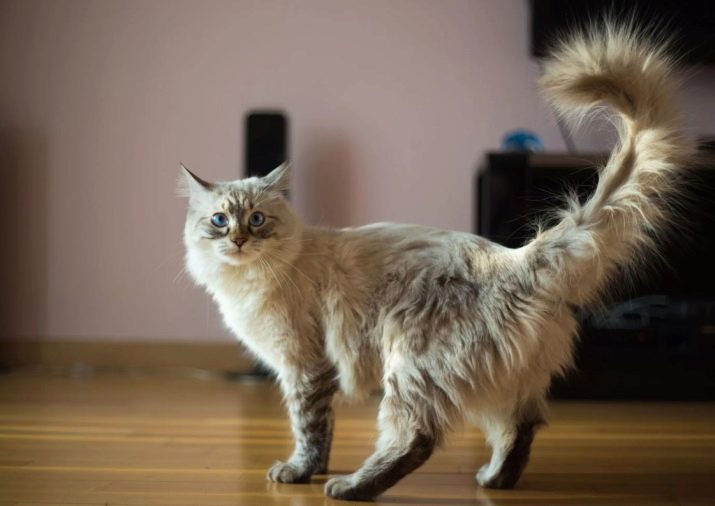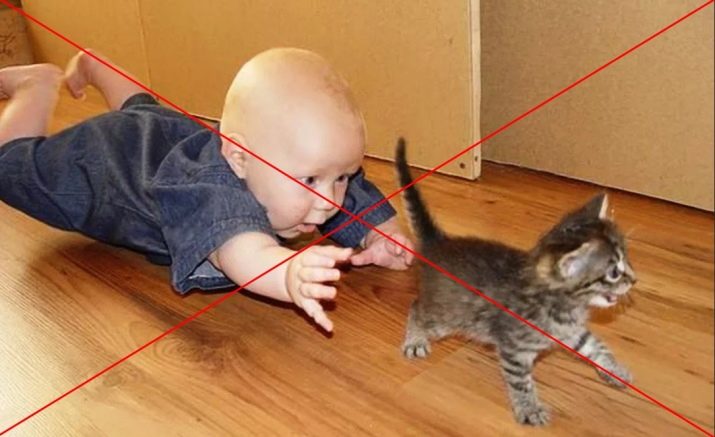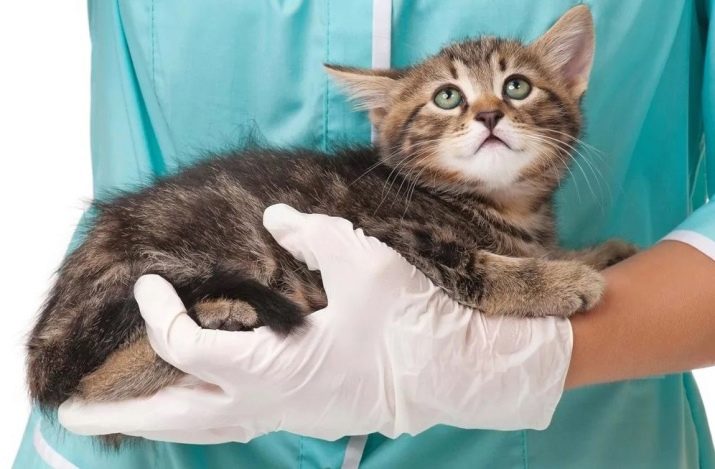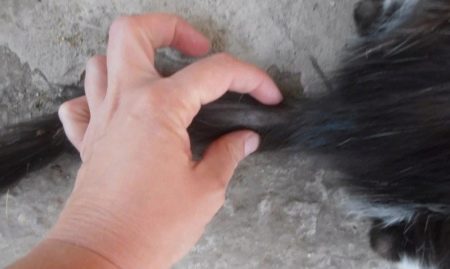Long and luxurious tail can surely be called one of the main advantages of a cat. Returning home from work, it is nice to see that you are met on the threshold by a pet with a tender and quiet purr and a tail high for joy. Nature has given these incredibly affectionate animals a tail not only for a luxurious appearance. Here the whole thing is that the long or short tail is a rather multifunctional element of the feline organism.
Structure and shape
The tail is a completely natural continuation of the cat's spine. The tail of the animal consists of three parts, such as:
- root is from 4 to 6 holistic vertebrae;
- the stem is not fully developed part of the spine, has the shape of a cylinder;
- the tip is a thinner vertebra, having an acute shape.
Cartilage and joints, located between all vertebrae, are necessary for excellent flexibility and increased mobility of the animal. The average tail length can be up to 27 cm, but for a number of well-known and expensive breeds, for example, Maine Coons, it can grow up to 40 cm. In Bobtails, the tail is, on the contrary, very small, barely noticeable, only 3-4 cm. The tail of males is usually 2–3 cm longer than that of the cat of this same breed.
Functions
Cats actively use the tail throughout their lives. Sometimes a cat's tail can play as important a value to your cat as its main pride is a mustache. The entire tail is almost riddled with the finest nerve endings that are directly connected to the central nervous system and allow your pet to feel better in the environment.. Using such an important part of the body, the animal seems to be “groping” the whole space next to it, which greatly improves its neat movement, even in a state of complete darkness.
Balance
Quite often you can hear stories that the cat fell from a great height, while remaining completely unscathed. One of the reasons for this amazing ability is tail balancing. During the jump or when falling, the pet's body fully maintains its balance, which allows the animal to land on all four legs.
The presence of the balancer for the animal gives him the opportunity to easily climb very tall structures and trees, and after wading through very thin, sagging branches, jump over them or gently descend.
Steering wheel
When hunting, the tail, almost like a steering wheel, allows the animal to make various kinds of turns. The tail rotates very actively with all body movements of the animal, asking his body a certain direction.
Thermoregulation
During the summer heat, the cat uses the tail as a vane - very few of the inhabitants know about this interesting fact. Thus, the animal lowers the temperature of its own body and saves its body from possible overheating. And if the cat’s body doesn’t have enough heat, the pet will start to curl into a compact tangle, and with its tail it will cover the nose and eyes - this is done to reduce heat losses.
Frightening the enemies
When a cat is seriously frightened, its fur will immediately stand on end, and its fluffed tail will be highly raised and ridiculously arched in the form of an arc. With this pose, the pet tries to appear much more than it actually is.Many representatives of the animal world resort to a similar trick (to create a visual illusion of increased body size) in order to avoid a potential collision and to frighten enemies.
In the wild, any bite can, in principle, be fatal; for this reason, even among close relatives there are special rituals that allow us to determine who is in charge here without a fight. For example, many cats will prefer a long period of time to wonderfully howl and brazenly spin around each other before they really stick in a fight. A luxurious, big fluffed up tail in such a situation will help its owner get a much needed advantage in strength.
Means of communication
It is worth paying attention to the fact that cats use their tail as one of the devices that are actively used for full communication. Remember how your pet in moments of serious irritation suddenly begins to shake its tail, or that jerks strongly around, as it fluffs up its pride in the form of a tail and lifts it, if something unfamiliar scares the animal.
In combination with the position of the ears and the expression of the pet's eye, the amplitude of the movement of its tail helps to draw the most correct conclusions about how it will behave in the very near future. For example, if the tail of a pet suddenly starts to rush to the side, and the ears are pressed tightly to the head, this means that your pet is carefully preparing for the attack and is about to jerk into battle.
Hunting
During his hunt, the cat lowers its tail as low as possible and tries to keep it parallel to the ground. In certain cases, you can even see a slight twitching of the tip of the tail - in such a simple way the animal tries to contain its increasing excitement.
It is worth explaining how, without such an important element as a tail, are those pets that are born completely without tails or are left without their tail due to unhappiness or the stupid will of the owners. Those who have lost their tails by chance, for a long time, may lose their grace when moving and confidence in their walk, and they will have to learn to live without such a convenient balancing tool.
Those who, according to their natural data from birth, do not have such a part of the body as the tail, as a rule, have elongated and rather muscular hind legs - to a certain extent this compensates for their lack of a chic tail.
Health indicator
As the coat on the tail, you can learn about the diseases that a particular pet has. If the cat has hair in the sacrum area at the very base of the tail, then the cat obviously lacks vitamins and various trace elements in the body, which can be corrected with a fortified diet. Loss of hair on this part of the body may indicate the presence of lichen on the body of an animal, fungus, lashing, or allergies.
Comfort and entertainment
For comfort and games, cats also need a tail. An animal that wants to warm up and have fun, in those moments when nothing within reach is able to attract its attention, can fully concentrate on its own tail. After all, he is actively moving all the time, and this perfectly imitates a potential victim, for which you can hunt.
When a cat runs after its tail, and then catches it, it begins to realize that it is just a part of its own body, and not an enemy or a victim. After realizing this fact, as a rule, the animal begins to intensively care for the tail. When playing, the cat itself would never harm it, so do not stop it from playing with the tail.
Is it possible to do without it?
Very often, stray cats lose their tails as a result of some kind of injury, this kind of incidents happen to pets much less often, especially if they do not go out at all and do not climb over trees for this reason.A number of breeds of the tail do not have any since birth or it is so small that it is almost imperceptible. Many owners of animals ask themselves a completely rational question - can cats even do without this organ?
If the tail is absent in a purebred animal and is a characteristic feature of its breed, then the tail does not matter much for such pets, as for pets that have lost their tail due to injury or serious illness. In principle, without a tail, an ordinary cat can live the same good life as with a tail.. Perhaps a part of this life will no longer be so comfortable, but the pet will be able to convey all of its feelings with its eyes, meows, and paws.
What do the movements of the tail mean?
The value of a large or small tail for a pet is rather difficult to overestimate. If you take a careful look at how a cat's tail moves, you can easily understand what your furry friend's mood is, how he feels, whether your pet has a desire to talk or, on the contrary, wants to be left completely alone . Tail movements can mean a lot.
- Comfort. When the animal is comfortable, its tail is in a position of complete rest - that is, it does not move at all. Sometimes a pet can idly twist the tip of the tail, if the tail hangs in a quite normal way. If he is the most relaxed - it will also say that your favorite animal is in a state of calm. The fact that the tail neatly lies around a sitting or lying cat can also speak about the excellent mood of the animal.
- Joy. The tail in such a case will be friendly to rise up or slightly curved arc.
- Curiosity. It seems that the cat listens attentively to something, while slowly wagging its tail.
- Playful mood. When a person wants to stroke a cat, and his tail seems to be straining and trembling a little - the pet is already ready for an aggressive game, which means it can seriously scratch. Often, the animal's playful mood can be expressed in its strong swinging.
- Irritation. The condition of the cat can be seen immediately - he begins to pace nervously, bypassing his master.
- Fury. The hair of the animal suddenly stands on end throughout the body. The tail moves sideways and fluffs. The back sharply arches, furious meowing and snorting is heard. In this case, you need to be as careful as possible, since the mood of your furry pet is very militant and aggressive.
If you see ruffled fur on your cat's back and tail, it means that your pet is seriously excited. This kind of condition can arise from his fear or from too active play. You can quickly calm the cat by lightly stroking. If the cat holds its tail at an angle of 45 degrees - this is 100% indicates that it treats others with disbelief.
If the cat squeezes its own tail between its paws, it will mean that it is scared and will not resist, this is a clear sign of recognition of defeat in animals.
It often happens that when there are too many people in the house, the cat rises and the tail begins to twitch. This means that the cat is happy, but only the presence of its owners. If a cat is extremely interested or passionate about something, then the tail tip will be actively twitching. If the cat wags its tail from side to side, it means that there is a conflict inside your pet. The animal must make some choice, but cannot quickly decide how to act faithfully.
Why not pull and pull?
The tail is an extremely important organ of the cat's body, since it contains many nerve endings. Exactly because of this reason it cannot be twitched too much, since such careless handling of a pet can lead to the loss of the capacity of this particular part of the body. And his injury, as it is not strange to sound, can significantly negatively affect the work of the kidneys and intestines, the reproductive system, and even the hind legs.
Many cats simply do not like being even slightly touched by the tail and immediately get up in a defensive position.
If your animal suddenly fell extremely unsuccessfully, then an unnatural appearance will tell you about the dislocation of the tail. In this case, you will need to consult a doctor. At home and try to treat the cat itself is not worth it. In addition to X-rays, in a veterinary clinic, an animal will be put on a tail or a tight bandage on the tail.
The overall health of your furry friend will also be reflected in the thickness of his fur on the tail. Often the tail begins to go bald. This may be due to the presence of dermatitis or eczema, as well as talking about problems with the stomach and the presence of many other diseases. Sometimes it can even be a serious stress. In any case, you need to find the cause as soon as possible before starting the treatment, so you will still have to go to the vet. He will carefully examine your pet and prescribe the correct treatment.
See why a cat needs a tail, see below.

